WAEC: MATHEMATICS
Quizzes
-
2021 Mathematics WAEC Objective Past Questions
-
2021 Mathematics WAEC Essay Past Questions
-
2020 Mathematics WAEC Objective Past Questions
-
2020 Mathematics WAEC Theory Past Questions
-
2019 Mathematics WAEC Objective Past Questions
-
2019 Mathematics WAEC Theory Past Questions
-
2018 Mathematics WAEC Objective Past Questions
-
2018 Mathematics WAEC Theory Past Questions
-
2017 Mathematics WAEC Objective Past Questions
-
2017 Mathematics WAEC Theory Past Questions
-
2016 Mathematics WAEC Objective Past Questions
-
2016 Mathematics WAEC Theory Past Questions
-
2015 Mathematics WAEC Objective Past Questions
-
2015 Mathematics WAEC Theory Past Questions
-
2014 Mathematics WAEC Objective Past Questions
-
2014 Mathematics WAEC Theory Past Questions
Quiz Summary
0 of 13 Questions completed
Questions:
Information
You have already completed the quiz before. Hence you can not start it again.
Quiz is loading…
You must sign in or sign up to start the quiz.
You must first complete the following:
Results
Results
0 of 13 Questions answered correctly
Your time:
Time has elapsed
You have reached 0 of 0 point(s), (0)
Earned Point(s): 0 of 0, (0)
0 Essay(s) Pending (Possible Point(s): 0)
Categories
- Not categorized 0%
- 1
- 2
- 3
- 4
- 5
- 6
- 7
- 8
- 9
- 10
- 11
- 12
- 13
- Current
- Review
- Answered
- Correct
- Incorrect
-
Question 1 of 13
1. Question
(a) Mr Sarfo borrowed $25,000.00 from AFIAK Financial Services at 21% simple interest per annum for 3 years. If he was able to pay back the loan in 2 years at equal yearly instalments, how much did he pay each year?
(b) Two consecutive numbers are such that the sum of thrice the smaller and twice the larger is 17. Find correct to three significant figures, the smaller number as a percentage of the sum of the two numbers.
-
This response will be reviewed and graded after submission.
Grading can be reviewed and adjusted.Grading can be reviewed and adjusted. -
-
Question 2 of 13
2. Question
A man left town M at 10.00a.m. and travelled by car to town N at an average speed of 72km/h. He spent 2 hours for a meeting and returned to town M by bus at an average speed of 40km/h. If the distance covered by the bus was 2km longer than that of the car and he arrived at town M at 1:55p.m., calculate the distance from M to N.
-
This response will be reviewed and graded after submission.
Grading can be reviewed and adjusted.Grading can be reviewed and adjusted. -
-
Question 3 of 13
3. Question
The points X, Y and Z are located such that Y is 15km south of X, Z is 20km from X on a bearing of 270º. Calculate, correct to:
(a) two significant figures, |YZ|
(b) the nearest degree, the bearing of Y from Z
-
This response will be reviewed and graded after submission.
Grading can be reviewed and adjusted.Grading can be reviewed and adjusted. -
-
Question 4 of 13
4. Question
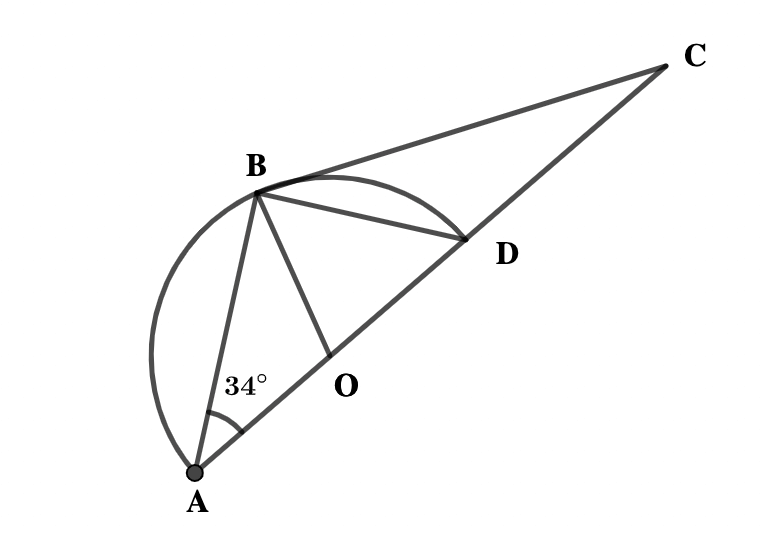
NOT DRAWN TO SCALE
In the diagram, \( \scriptsize \bar{AD} \) is a diameter of a circle with centre O. If ABD is a triangle in a semi-circle and ∠OAB=34º,
find: (a) ∠OBD (b) ∠OCB
-
This response will be reviewed and graded after submission.
Grading can be reviewed and adjusted.Grading can be reviewed and adjusted. -
-
Question 5 of 13
5. Question
(a) A man shared his property among his children as follows:

Represent the information on a pie chart
(b) A box contains 5 red, 3 green and 4 blue identical beads. Calculate the probability that a girl takes away two red beads, one after the other, from the box.
-
This response will be reviewed and graded after submission.
Grading can be reviewed and adjusted.Grading can be reviewed and adjusted. -
-
Question 6 of 13
6. Question
(a) In a class of 80 students, \( \frac{3}{4} \) study Biology and \( \frac{3}{5} \) study Physics. if each student studies at least one of the subjects.
(i) draw a venn diagram to represent this information
(ii) how many students study both subjects;
(iii) find the fraction of the class that study Biology but not Physics.(b) Johnson and Jocatol Ltd. Owned a business office with floor measuring 15m by 8m which was to be carpeted. The cost of carpeting was GHȼ890.00 per square metre. If a total of GHȼ216,120.00 was spent on painting and carpeting, how much was the cost of painting?
-
This response will be reviewed and graded after submission.
Grading can be reviewed and adjusted.Grading can be reviewed and adjusted. -
-
Question 7 of 13
7. Question
(a) Copy and complete the table of values for the relation:
\( \scriptsize y = 2x^2 \: -\: x \: -\: 2 \\ \scriptsize\: for \: -4 \leq x \leq 4 \)

(b) Using a scale of 2cm to 1 unit on the x-axis, and 2cm to 5 units on the y – axis, draw the graph of
\( \scriptsize y = 2x^2 \: -\: x \: -\: 2 \\ \scriptsize\: for \: -4 \leq x \leq 4 \)
(c) On the same axes, draw the graph of y = 2x + 3
(d) Use the graph to find the:
(i) roots of the equation \( \scriptsize 2x^2 \: – \: 3x \: – \: 5 = 0 \)
(ii) range of values for which \( \scriptsize 2x^2 \: – \: x \: – \: 2 < 0 \)
-
This response will be reviewed and graded after submission.
Grading can be reviewed and adjusted.Grading can be reviewed and adjusted. -
-
Question 8 of 13
8. Question
(a) In ΔPQR, ∠PQR = 90º. If its area is 216cm² and |PQ|:|QR| is 3:4
Find |PR|
(b) The present ages of a man and his son are 47 years and 17 years respectively. In how many years would the man’s age be twice that of his son?
-
This response will be reviewed and graded after submission.
Grading can be reviewed and adjusted.Grading can be reviewed and adjusted. -
-
Question 9 of 13
9. Question

NOT DRAWN TO SCALE
In the diagram, PQRS is a trapezium with \( \scriptsize \bar{QR} || \bar{PS} \)
U and T are points on \( \scriptsize \bar{PS} \) such that \( \scriptsize \bar{PU} = 5cm, \:\bar{QU} = 12cm\)
and ∠PUQ = ∠STR =90°. If the area of ΔUQR = 20 cm2, calculate to the nearest whole number, the:
(a) Perimeter
(b) Area
of the trapezium.
-
This response will be reviewed and graded after submission.
Grading can be reviewed and adjusted.Grading can be reviewed and adjusted. -
-
Question 10 of 13
10. Question
(a) A cottage is on a bearing of 200° and 110° from Dogbe’s and Manu’s farms respectively. If Dogbe walked 5km and Manu 3km from the cottage to their farms, find, correct to:
(i) two significant figures, the distance between the two farms;
(ii) The nearest degree, the bearing of Manu’s farm from Dogbe’s.
(b) A ladder 10m long leaned against a vertical wall high. The distance between the wall and the foot of the ladder is 2m longer than the height of the wall. Calculate the value of x.
-
This response will be reviewed and graded after submission.
Grading can be reviewed and adjusted.Grading can be reviewed and adjusted. -
-
Question 11 of 13
11. Question
The table shows the distribution of the number of hours per day spent in studying by 50 students

Calculate, correct to two decimal places, the:
(a) Mean;
(b) Standard deviation
-
This response will be reviewed and graded after submission.
Grading can be reviewed and adjusted.Grading can be reviewed and adjusted. -
-
Question 12 of 13
12. Question
(a)
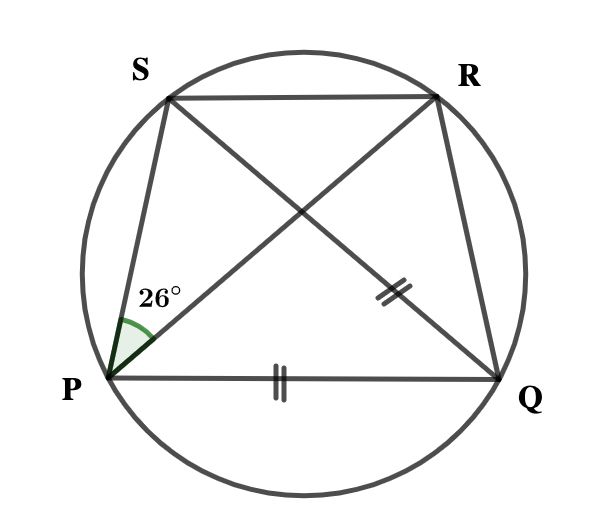
In the diagram, PQRS is a circle. |PQ| = |QS|, ∠SPR = 26º and the interior of angles of ΔPQS are in the ratio 2:3:3.
Calculate:
(i) ∠PQR
(ii) ∠RPQ
(iii) ∠PRQ(b) The coordinates of two points P and Q in a plane are (7, 3) and (5, x) respectively, where x is a real number.
If \( \scriptsize |PQ| = \sqrt{29} \: units, \) find the value of x
-
This response will be reviewed and graded after submission.
Grading can be reviewed and adjusted.Grading can be reviewed and adjusted. -
-
Question 13 of 13
13. Question
(a) On Sam’s first birthday celebration, his grandfather deposited an amount of $1,000.00 in a bank compounded at 4% interest annually. Find how much is in the account if Sam is 4 years old.
(b)
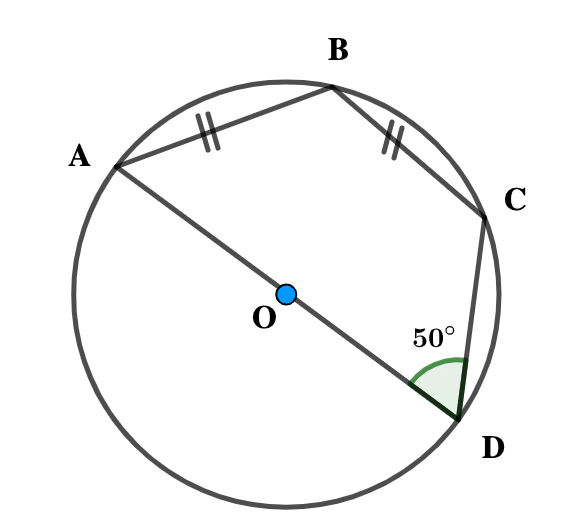
NOT DRAW TO SCALE
In the diagram, ABCD are points on the circle O.
If |AB| = |BC| and ∠ADC = 50º, find ∠BAD
-
This response will be reviewed and graded after submission.
Grading can be reviewed and adjusted.Grading can be reviewed and adjusted. -






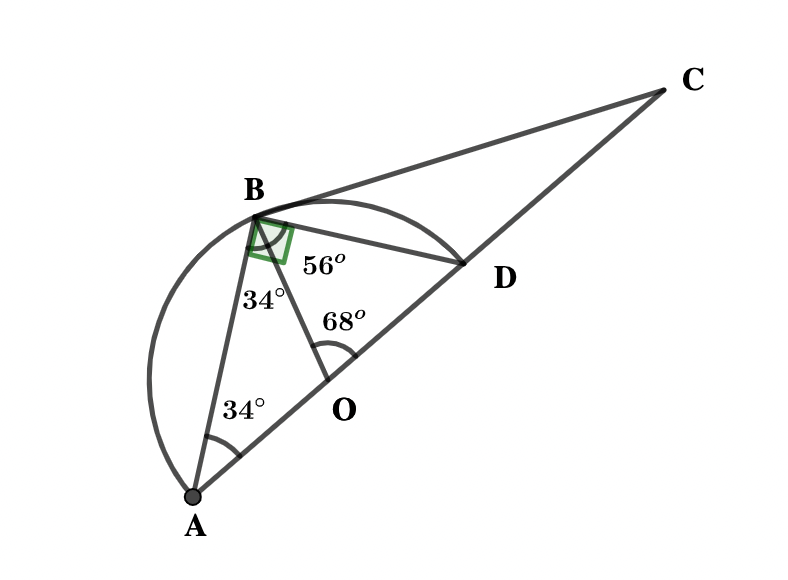


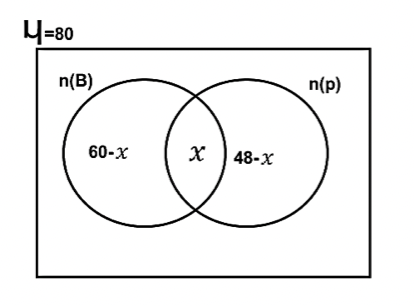


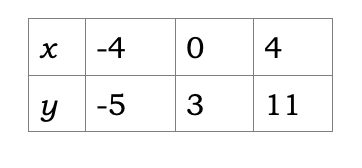

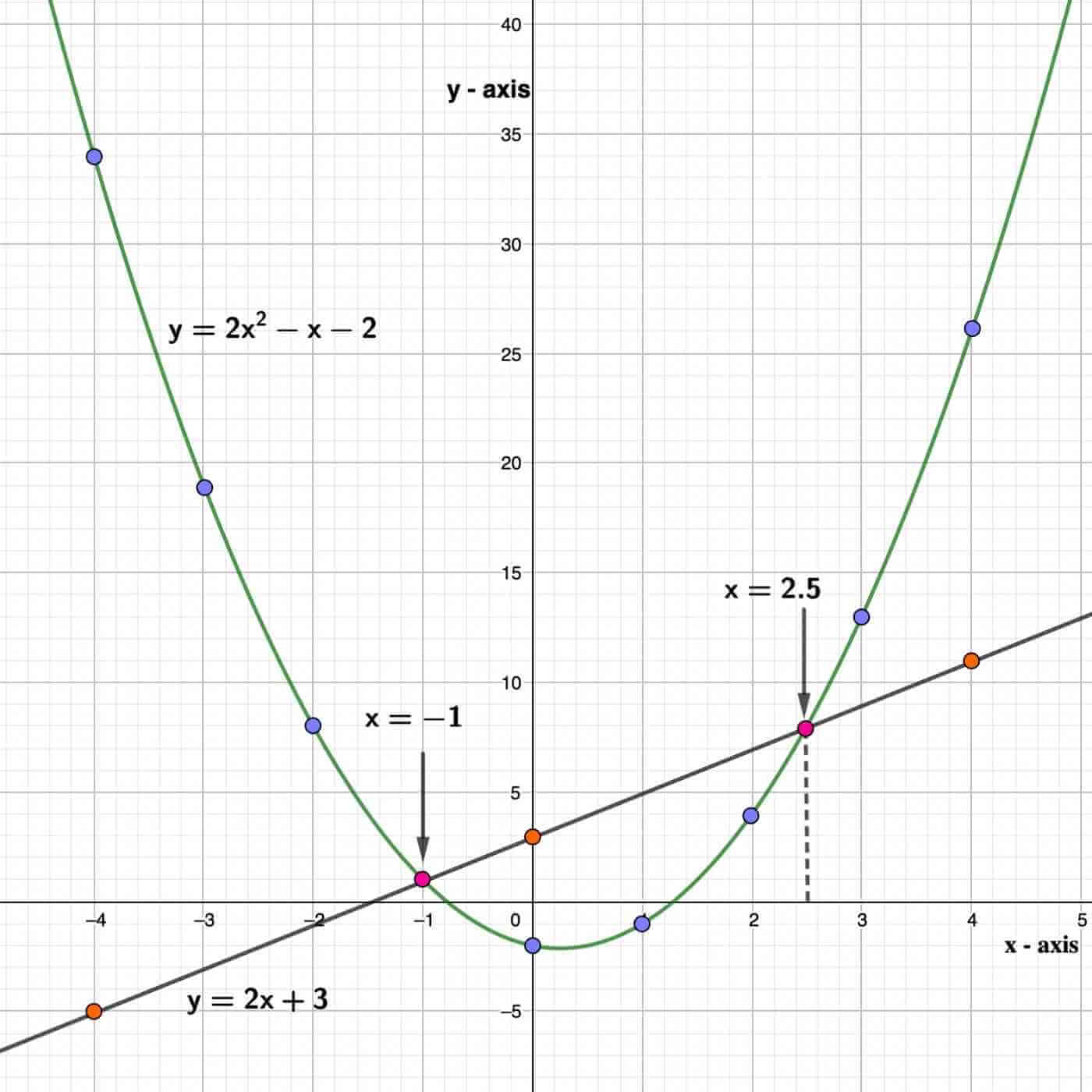


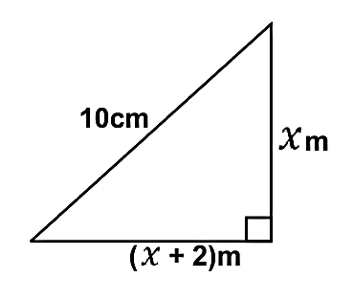
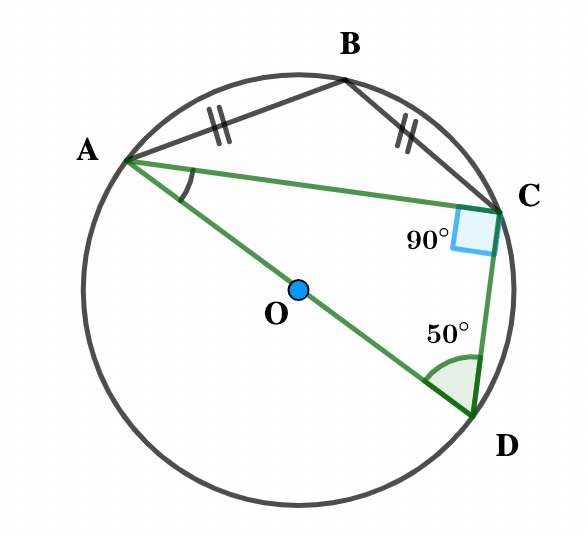


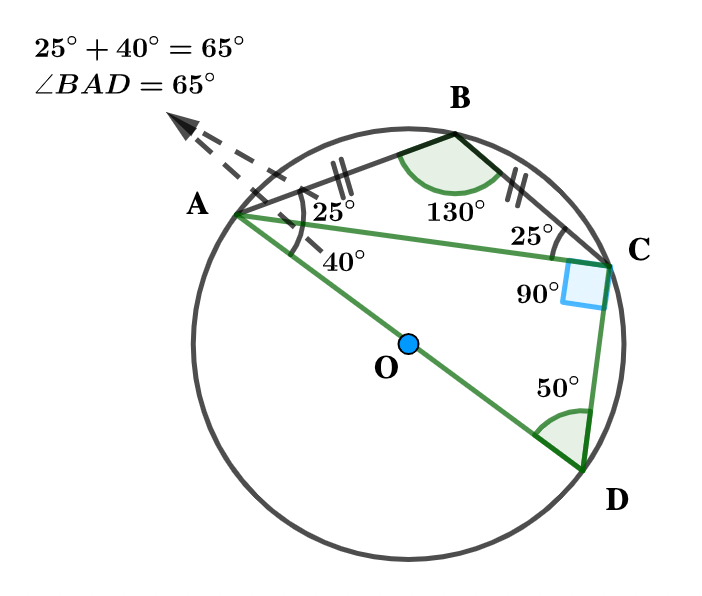
Thanks
Nice❤️